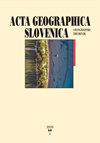斯洛文尼亚Postojna洞穴侧口非均质沉积物年代学
IF 0.9
4区 地球科学
Q3 GEOGRAPHY, PHYSICAL
引用次数: 3
摘要
2001年,在Postojna洞穴的Rov Novih Podpisov侧通道开发的旅游路线暴露了超过4米厚的沉积序列,其特征是细粒度河流沉积物和砾石沉积物之间穿插的水平流石层,记录了过去的环境变化。流石沉积的时间由放射性碳和铀钍定年技术确定。结果表明,该地区具有33 ka、103 ka和153 ka三个不同年龄的流岩相。这些结果还表明,流石沉积并不仅仅局限于温暖的气候时期,这表明斯洛文尼亚西南部冰川时期的环境条件支持了流石沉积。本文章由计算机程序翻译,如有差异,请以英文原文为准。
Chronology of heterogeneous deposits in the side entrance of Postojna Cave, Slovenia
The development of the tourist trail in the side passage Rov Novih Podpisov of Postojna Cave in 2001 exposed an over four metres thick sedimentary succession characterised by horizontal flowstone layers intercalated between fine-grained fluvial sediments, and gravel deposits that record past environmental changes. The time of the flowstone deposition was determined by radiocarbon and uranium-thorium dating techniques. The results yielded three distinctive age groups of flowstone facies of 33 ka, 103 ka and 153 ka. These results also indicate that flowstone deposition has not been limited solely to periods of warm climate, which suggests that environmental conditions during glacial periods in south-western Slovenia supported flowstone deposition.
求助全文
通过发布文献求助,成功后即可免费获取论文全文。
去求助
来源期刊
CiteScore
2.60
自引率
35.30%
发文量
15
审稿时长
>12 weeks
期刊介绍:
Acta geographica Slovenica publishes original research papers from all fields of geography and related disciplines, and provides a forum for discussing new aspects of theory, methods, issues, and research findings, especially in Central, Eastern and Southeastern Europe.
The review accepts original research papers and review papers. Papers presenting new developments and innovative methods in geography are welcome. Submissions should address current research gaps and explore state-of-the-art issues. Research based on case studies should have the added value of transnational comparison and should be integrated into established or new theoretical and conceptual frameworks.
The target readership is researchers, policymakers, students, and others who are studying or applying geography at various levels.
Submissions are accepted in English or Slovenian.

 求助内容:
求助内容: 应助结果提醒方式:
应助结果提醒方式:


